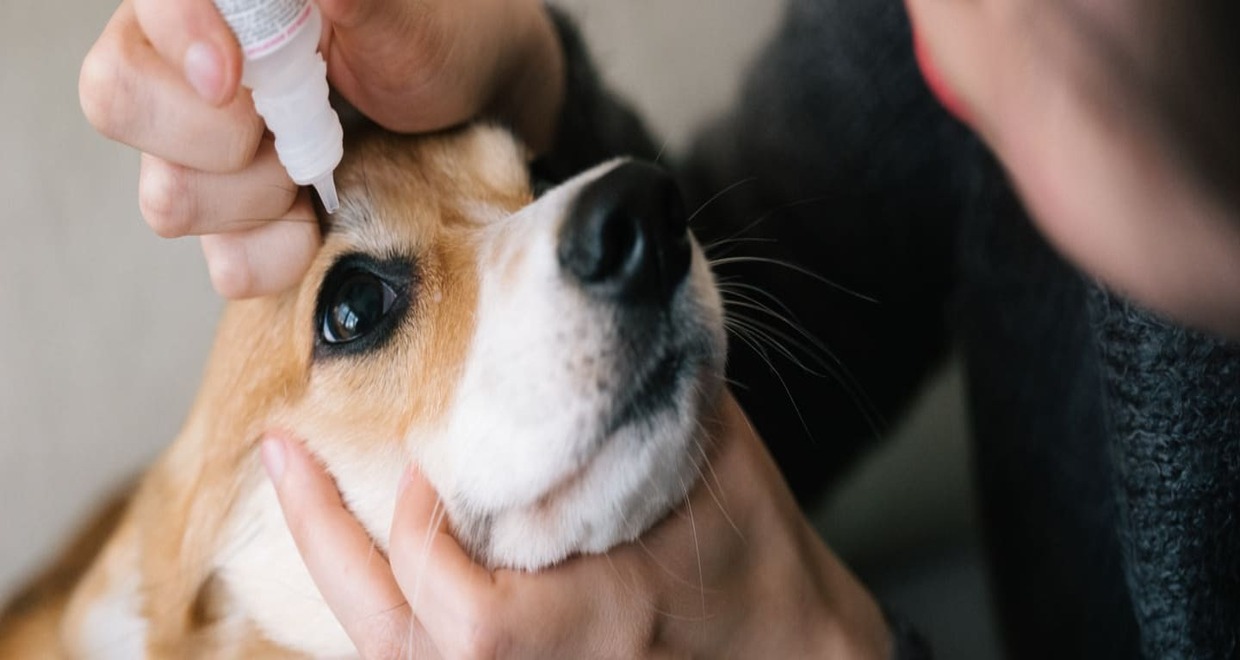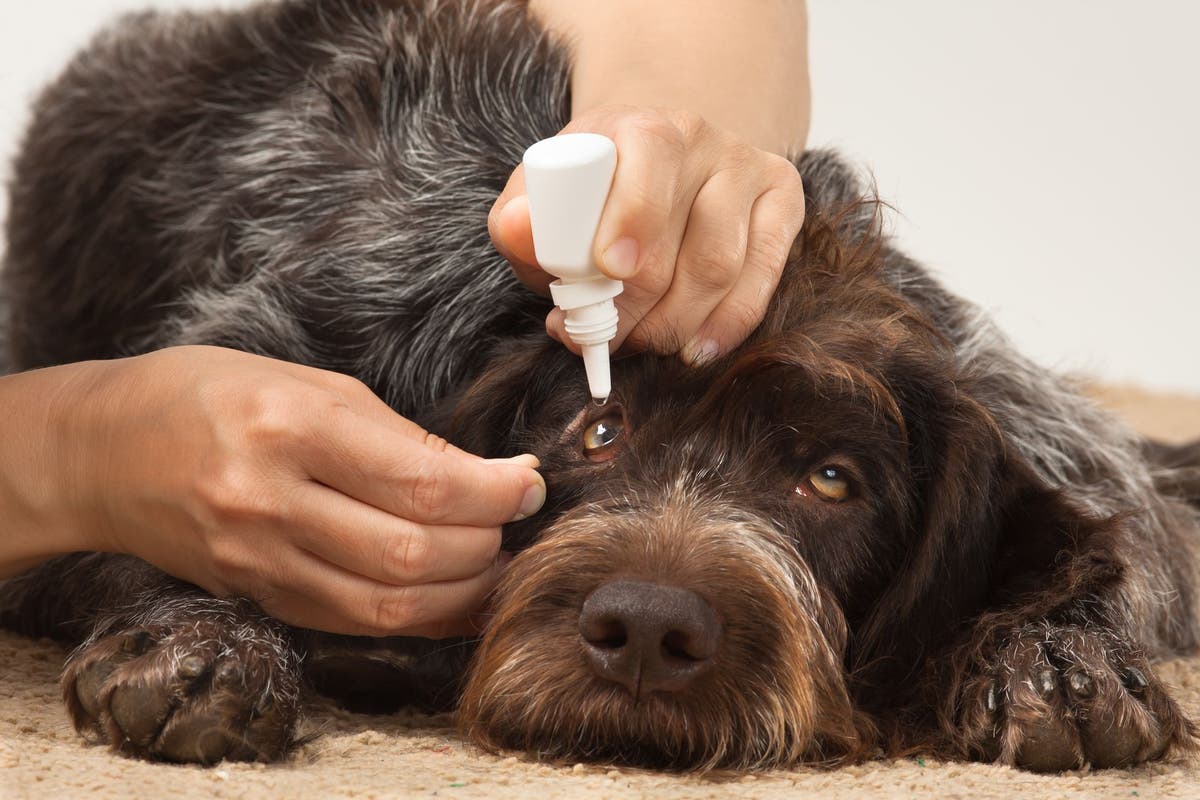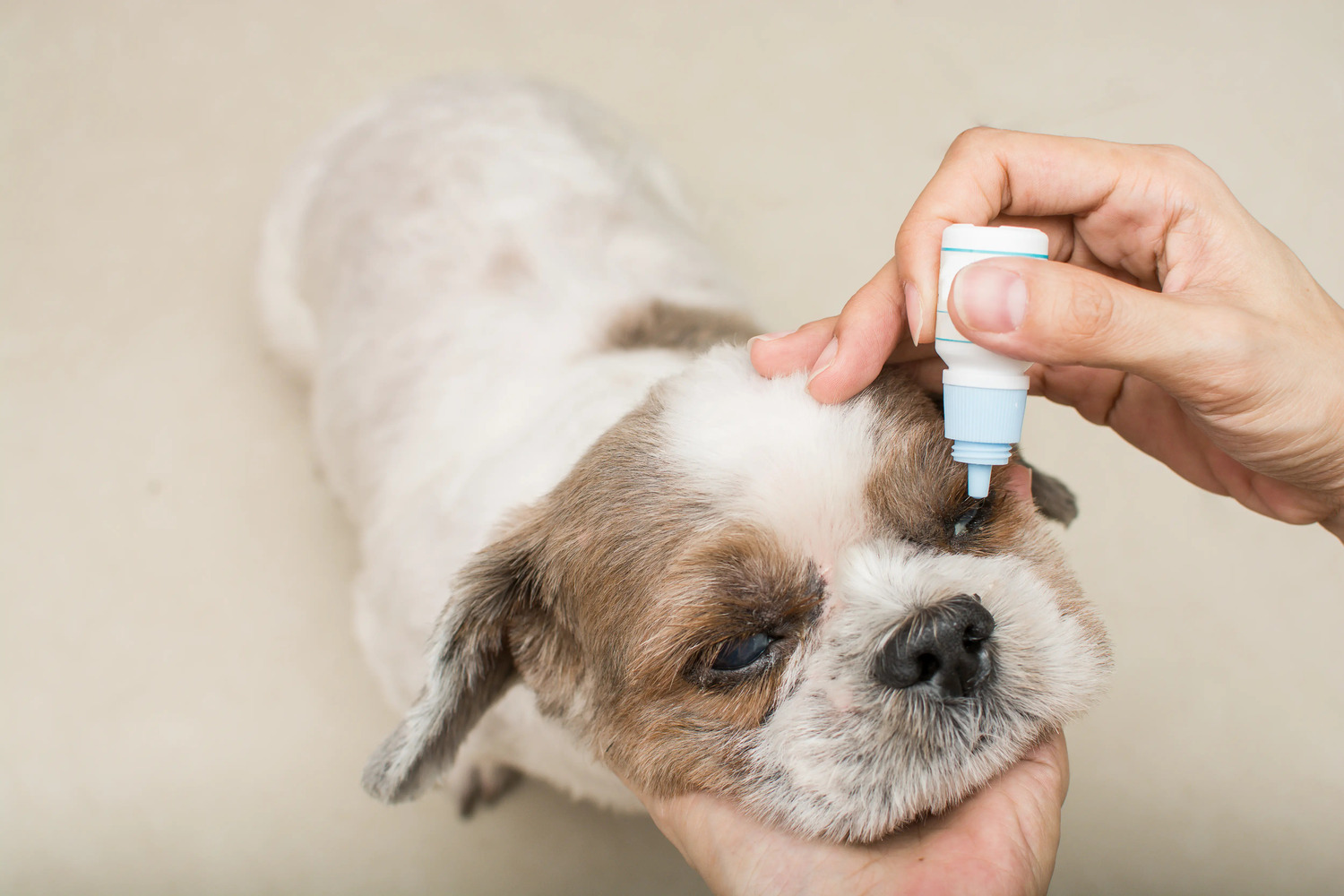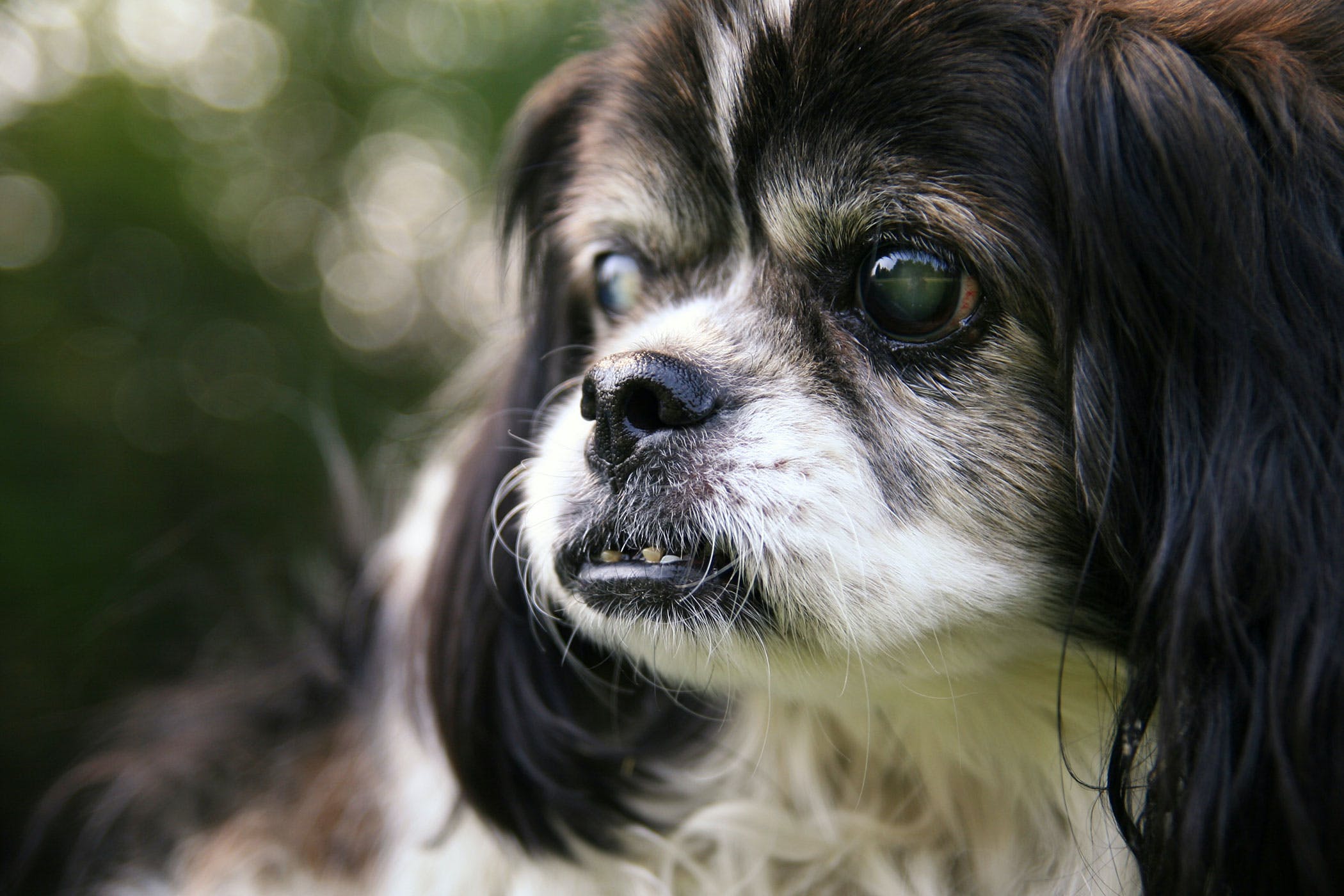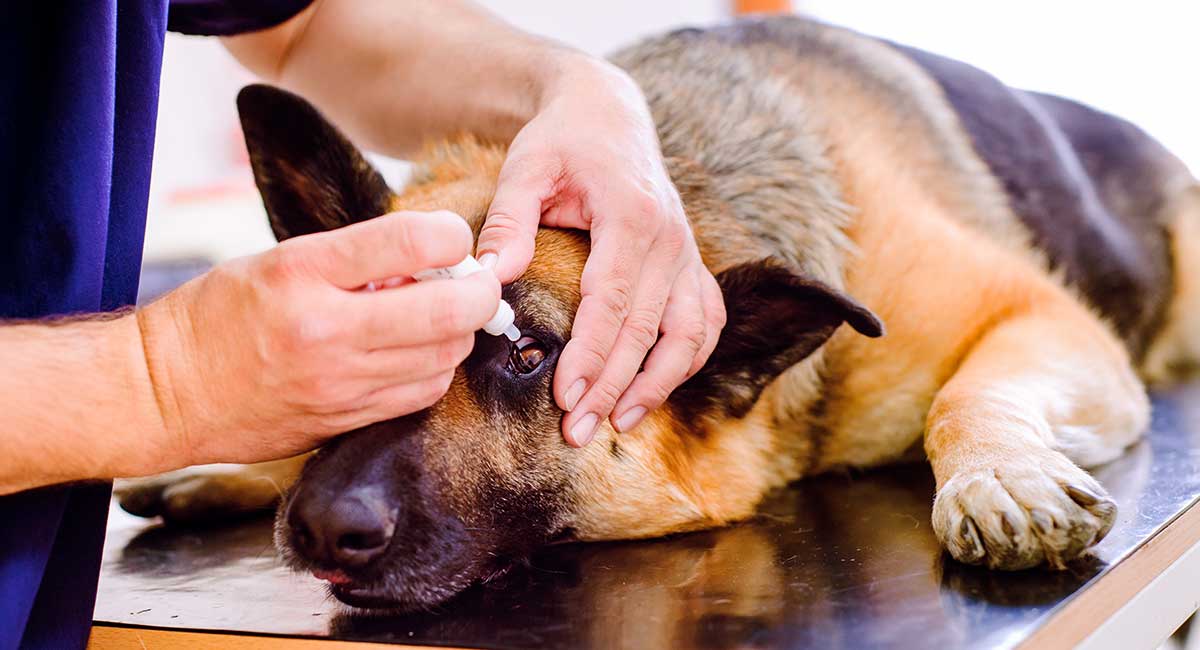Home>Health & Wellness>Common Health Issues>Eye and Ear Health>How Fast Do Cyclosporine Eye Drops Work In Dogs
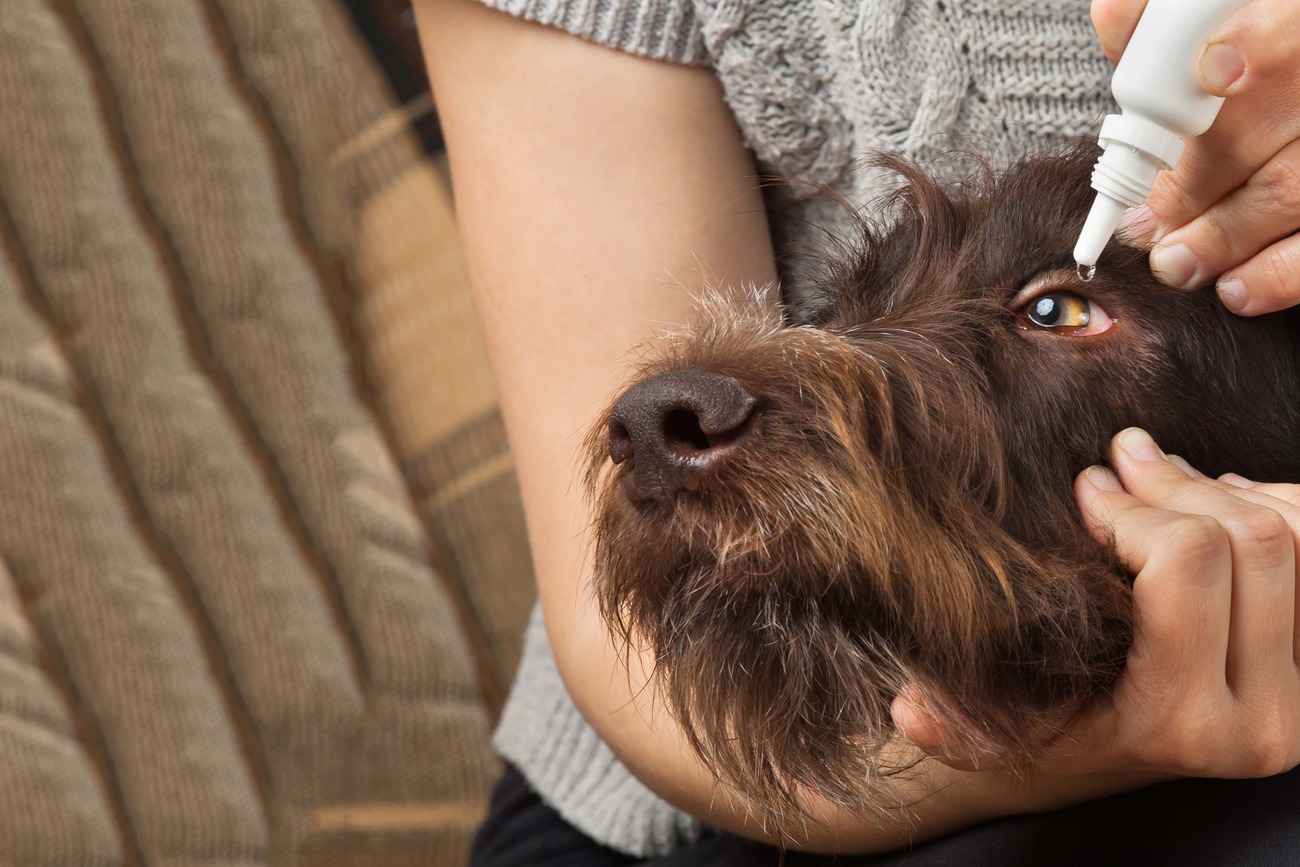

Eye and Ear Health
How Fast Do Cyclosporine Eye Drops Work In Dogs
Published: February 12, 2024
Discover the effectiveness of cyclosporine eye drops for dogs and how quickly they can improve eye and ear health. Learn more about the benefits and timeline for results.
(Many of the links in this article redirect to a specific reviewed product. Your purchase of these products through affiliate links helps to generate commission for Pawsomeoldies.com, at no extra cost. Learn more)
Table of Contents
Introduction
Cyclosporine eye drops are a vital treatment for various eye conditions in dogs, including keratoconjunctivitis sicca (KCS), commonly known as dry eye. KCS is a condition in which the eyes do not produce enough tears to maintain proper lubrication, leading to discomfort, inflammation, and potential damage to the cornea. Cyclosporine eye drops work by reducing inflammation and stimulating tear production, thereby alleviating the symptoms associated with dry eye.
Understanding the mechanism of action and the expected timeframe for results is crucial for pet owners and veterinarians alike. By gaining insight into the speed at which cyclosporine eye drops work in dogs, it becomes possible to set realistic expectations and monitor the treatment's progress effectively. This article delves into the intricacies of cyclosporine eye drops, their administration in dogs, factors influencing their speed of action, the anticipated timeframe for results, and the importance of monitoring and adjusting the treatment as necessary.
As we explore the world of cyclosporine eye drops in the context of canine eye health, it is essential to recognize the significance of this treatment in enhancing the well-being of our beloved furry companions. Let's embark on a journey to unravel the mysteries of cyclosporine eye drops and gain a deeper understanding of their impact on the ocular health of dogs.
Understanding Cyclosporine Eye Drops
Cyclosporine is a potent immunosuppressive agent that has been widely utilized in human and veterinary medicine. When formulated into eye drops, it serves as a valuable tool in managing various ocular conditions in dogs. The primary function of cyclosporine eye drops is to mitigate inflammation and stimulate tear production, addressing the underlying causes of dry eye in canines.
In the context of keratoconjunctivitis sicca (KCS), also known as dry eye, cyclosporine eye drops play a pivotal role in alleviating the discomfort and potential corneal damage associated with this condition. By modulating the immune response and promoting tear production, cyclosporine helps restore the ocular surface's natural lubrication, thereby enhancing the overall ocular health of affected dogs.
Cyclosporine eye drops exert their therapeutic effects by targeting specific immune cells and inhibiting the release of inflammatory mediators within the ocular tissues. This mechanism of action not only reduces the inflammation present in the eyes but also facilitates the regeneration of functional tear-producing cells, leading to improved tear film stability and ocular comfort for the affected dogs.
It is important to note that the formulation and concentration of cyclosporine eye drops can vary between different products. Some formulations may contain additional ingredients to enhance ocular absorption and prolong the contact time of the medication on the ocular surface, thereby optimizing its therapeutic efficacy.
In summary, cyclosporine eye drops represent a cornerstone in the management of dry eye and other ocular conditions in dogs. By comprehending the mechanism of action and the specific role of cyclosporine in addressing the underlying pathophysiology of dry eye, veterinarians and pet owners can appreciate the significance of this treatment modality in preserving the ocular health and comfort of canine companions.
Administration of Cyclosporine Eye Drops in Dogs
Administering cyclosporine eye drops in dogs requires a meticulous approach to ensure optimal therapeutic outcomes. The proper administration of these eye drops is essential for achieving effective ocular delivery and maximizing their therapeutic potential. Here's a detailed guide on the administration of cyclosporine eye drops in dogs:
Step 1: Preparation
Before initiating the administration, it is crucial to prepare the dog and the medication. Ensure that the dog is calm and positioned comfortably. Shake the cyclosporine eye drop bottle gently to homogenize the solution, and inspect the bottle for any signs of contamination or damage.
Step 2: Application
Gently hold the dog's head steady, tilting it slightly upward to expose the eyes. With one hand, carefully retract the lower eyelid to create a small pocket for the eye drops. Hold the bottle of cyclosporine eye drops close to the eye but avoid direct contact with the ocular surface. Instill the prescribed number of drops into the lower conjunctival sac, ensuring that the drops are delivered accurately.
Read more: How To Give A Dog Eye Drops
Step 3: Blinking and Distribution
After instilling the eye drops, release the dog's head and allow it to blink naturally. Blinking facilitates the distribution of the medication across the ocular surface and aids in the uniform spreading of the eye drops over the cornea and conjunctiva.
Step 4: Prevention of Contamination
To prevent contamination and ensure the sterility of the eye drops, avoid touching the tip of the dropper bottle to any surfaces, including the dog's eyes or surrounding tissues. Recap the bottle immediately after use and store it according to the manufacturer's instructions.
Step 5: Compliance and Monitoring
Consistency in administering cyclosporine eye drops is paramount for the treatment's success. Adhere to the prescribed dosing schedule and monitor the dog's response to the medication closely. Any concerns or observed changes in ocular health should be promptly communicated to the veterinarian for further evaluation and potential adjustments to the treatment plan.
By following these steps diligently, pet owners can ensure the effective and safe administration of cyclosporine eye drops in dogs, thereby contributing to the improvement of their ocular health and overall well-being.
Factors Affecting the Speed of Action
Several factors influence the speed at which cyclosporine eye drops work in dogs, ultimately impacting the onset and magnitude of therapeutic effects. Understanding these factors is crucial for managing expectations and optimizing the treatment's efficacy. Here are the key determinants that can influence the speed of action of cyclosporine eye drops in dogs:
-
Severity of the Condition: The severity of the underlying ocular condition, such as keratoconjunctivitis sicca (KCS), can significantly impact the speed of response to cyclosporine eye drops. In cases of advanced or long-standing dry eye, the ocular tissues may require a longer duration to respond to the medication, potentially delaying the onset of noticeable improvements.
-
Individual Variability: Dogs, like humans, exhibit individual variability in their response to medications. Factors such as genetic predisposition, overall health status, and ocular physiology can influence how quickly an individual dog responds to cyclosporine eye drops. Some dogs may exhibit a rapid and robust response, while others may require a more gradual and sustained treatment approach.
-
Concurrent Medications: If the dog is receiving other ocular medications or systemic treatments that can affect tear production or ocular inflammation, the concurrent use of these medications alongside cyclosporine eye drops may influence the speed of action. Interactions between medications and their collective impact on ocular health can modulate the overall treatment response.
-
Compliance and Administration Technique: The consistent and accurate administration of cyclosporine eye drops is essential for optimizing their therapeutic efficacy. Inconsistent dosing or improper administration techniques can compromise the speed of action, potentially delaying the desired ocular improvements. Educating pet owners on proper administration techniques and ensuring compliance with the prescribed dosing schedule is paramount.
-
Underlying Health Conditions: Concurrent systemic health conditions, such as autoimmune disorders or endocrine imbalances, can influence the ocular environment and the body's response to cyclosporine. Addressing and managing these underlying health conditions in conjunction with the use of cyclosporine eye drops can contribute to a more favorable and expedited treatment response.
-
Environmental Factors: Environmental elements, such as air quality, allergens, and exposure to irritants, can impact the ocular surface and tear film stability. Managing these environmental factors can complement the action of cyclosporine eye drops and contribute to a more rapid and sustained improvement in ocular health.
By considering these factors, veterinarians and pet owners can gain insights into the multifaceted nature of treatment response to cyclosporine eye drops in dogs. This comprehensive understanding enables the implementation of tailored treatment strategies and the proactive management of variables that can influence the speed and magnitude of therapeutic action.
Read more: What To Do If Your Dog Eats Eye Drops
Expected Timeframe for Results
The expected timeframe for observing noticeable results following the initiation of cyclosporine eye drops in dogs can vary based on several factors, including the specific ocular condition being treated, the individual dog's response to the medication, and the overall management of the underlying health concerns. While it is essential to approach each case with a degree of flexibility and consideration for the unique variables at play, general expectations regarding the timeframe for results can provide valuable guidance for pet owners and veterinarians.
In many cases, the initial effects of cyclosporine eye drops may become apparent within the first few weeks of treatment. However, it is important to recognize that the full extent of therapeutic benefits may take several weeks to manifest comprehensively. This gradual progression of improvement is attributed to the underlying mechanisms of action of cyclosporine, which involve modulating the immune response, promoting tear production, and addressing the inflammatory processes within the ocular tissues.
For dogs with mild to moderate cases of dry eye or other ocular conditions, an observable reduction in ocular discomfort, decreased redness, and improved tear film stability may become evident within the first 2 to 4 weeks of initiating cyclosporine eye drops. These early signs of improvement signify the medication's positive impact on the ocular environment and the beginning of the therapeutic journey.
In instances where the ocular condition is more severe or has been present for an extended duration, the timeframe for substantial improvements may extend beyond the initial 4-week period. Dogs with advanced dry eye or complex ocular disorders may require a more prolonged treatment course to achieve significant and sustained enhancements in ocular health. It is essential for pet owners and veterinarians to maintain realistic expectations and exercise patience during the early phases of treatment, recognizing that the full benefits of cyclosporine eye drops may unfold gradually over time.
Continued monitoring of the dog's ocular health and response to the medication is paramount in assessing the evolving timeframe for results. Regular veterinary examinations, including ocular assessments and tear film evaluations, enable the tracking of progress and the identification of any adjustments needed in the treatment plan. By remaining vigilant and proactive in monitoring the dog's ocular health, pet owners and veterinarians can collaboratively navigate the expected timeframe for results and optimize the management of the underlying ocular condition.
In summary, the expected timeframe for results following the administration of cyclosporine eye drops in dogs encompasses an initial phase of early improvements within the first few weeks, with the potential for continued progress over an extended treatment period. This nuanced understanding of the expected timeframe empowers pet owners and veterinarians to approach the treatment journey with informed perspectives and a steadfast commitment to the well-being of their canine companions.
Monitoring and Adjusting Treatment
Monitoring the response to cyclosporine eye drops in dogs is a dynamic process that necessitates vigilance, proactive assessment, and the potential for adjustments to the treatment plan. The ongoing evaluation of the dog's ocular health and the response to the medication is integral to optimizing therapeutic outcomes and addressing any evolving needs. Here's a comprehensive overview of the essential considerations pertaining to the monitoring and potential adjustments of the treatment regimen:
Ocular Assessments
Regular ocular assessments conducted by a veterinarian are fundamental in gauging the dog's response to cyclosporine eye drops. These assessments encompass a thorough evaluation of the ocular surface, tear film quality, corneal health, and overall ocular comfort. By closely examining these parameters, veterinarians can discern the progression of therapeutic effects, identify any persistent concerns, and tailor the treatment approach accordingly.
Tear Film Evaluations
Assessing the quality and quantity of the tear film is pivotal in monitoring the efficacy of cyclosporine eye drops. Tear film evaluations encompass various diagnostic techniques, including tear production tests, tear film stability assessments, and ocular surface examinations. These evaluations provide valuable insights into the impact of cyclosporine on tear production and the maintenance of ocular lubrication, guiding the assessment of treatment response and the potential need for adjustments.
Symptomatology and Comfort
Observing changes in the dog's ocular symptoms and overall comfort is a crucial aspect of monitoring the treatment's progress. Reductions in ocular redness, alleviation of discomfort, improved ocular discharge, and enhanced visual clarity are indicative of positive treatment response. Conversely, the persistence of symptoms or the emergence of new ocular concerns may prompt the need for reevaluation and potential modifications to the treatment regimen.
Adverse Reactions and Side Effects
Vigilance for potential adverse reactions or side effects to cyclosporine eye drops is paramount during the monitoring process. While cyclosporine is generally well-tolerated, individual dogs may exhibit hypersensitivity or idiosyncratic reactions to the medication. Monitoring for signs of ocular irritation, allergic responses, or systemic effects enables the prompt identification and management of any adverse reactions, necessitating potential adjustments to the treatment or alternative therapeutic approaches.
Collaborative Communication
Effective communication between pet owners and veterinarians is instrumental in the monitoring and potential adjustment of the treatment plan. Pet owners play a pivotal role in observing and reporting changes in their dog's ocular health, adherence to the prescribed dosing regimen, and any concerns related to the treatment. Open dialogue and proactive reporting facilitate collaborative decision-making and the timely implementation of adjustments to the treatment plan.
Flexibility and Individualized Care
Recognizing the individual variability in treatment response and the dynamic nature of ocular conditions, maintaining a flexible and individualized approach to monitoring and potential adjustments is essential. Tailoring the treatment plan to the specific needs and responses of each dog ensures that therapeutic interventions are optimized and aligned with the evolving requirements of ocular health management.
By integrating these comprehensive monitoring strategies and remaining attuned to the dog's ocular health dynamics, veterinarians and pet owners can collaboratively navigate the treatment journey, optimize therapeutic outcomes, and prioritize the ocular well-being of their canine companions. The iterative process of monitoring and potential adjustments underscores the commitment to proactive ocular health management and the pursuit of sustained improvements in the dog's ocular comfort and visual wellness.

